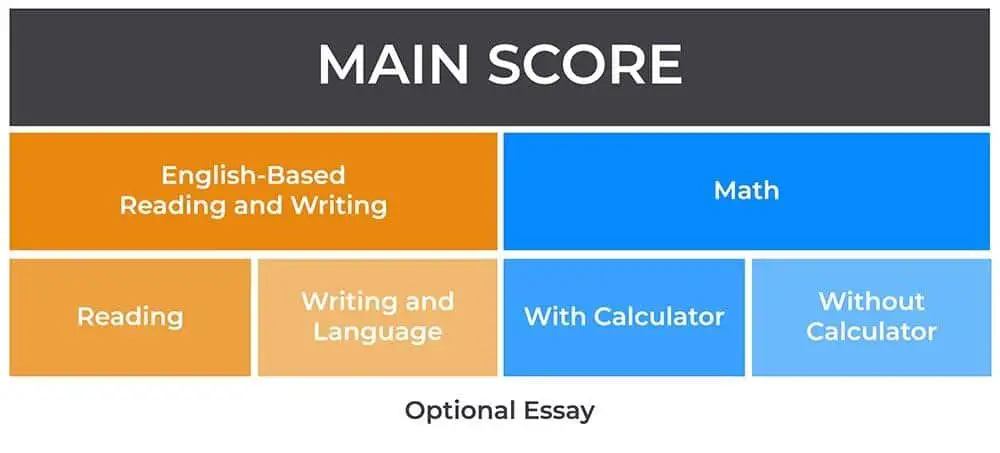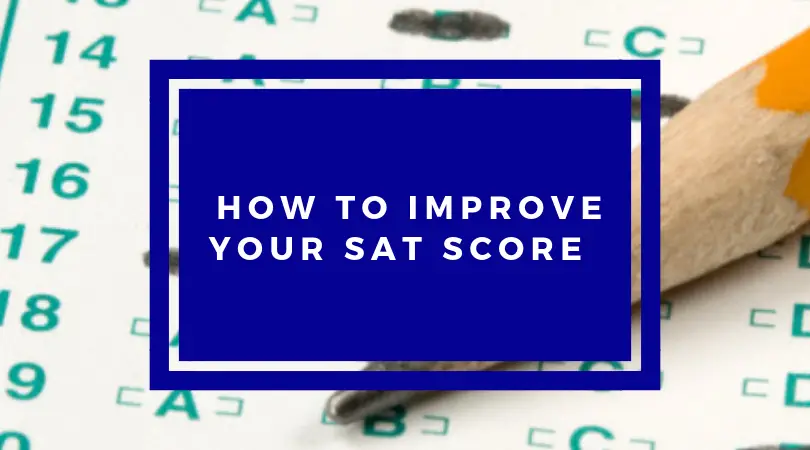Every US student who wants to enter a college has to take either ACT or SAT. These two standardized tests evaluate how ready you are for the college program, checking maths, writing, and argumentation knowledge. As for the SAT, admission officers consider composite and section SAT scores, but which of these is more critical for you?

SAT Scoring Approach
SAT allocates marks to two core sections: Math and EBRW (Evidence-Based Reading and Writing). Before January 2021, students could also opt for an Essay –– if their potential college required it. Each of the two sections brings you from 200 to 800 marks. The sum of the two is called the composite score.
When you enter your College Board account to see the SAT results, the first number you notice is the composite score. But does it mean it’s the most important? Well, yes and no, so let’s look at situations when scores make a difference.
College Admission Procedure
Let’s imagine that the minimal composite score required by the college you want to get to is 1400. There are three applicants: you, your friend Mary, and Jason. You have 1420, Mary has 1470, and Jason has only 1395. At the first stage, you and Mary qualify for further competition, but Jason doesn’t. That is the brightest example of where the composite score prevails.
But what happens next? Then admission officers look at the Math score –– which in our example has to be at least 730. Yours is 740, while Mary’s is only 710. Now section scores come into play, and you win and move to the next level of the admission procedure. If we come back to Jason and look at his section scores, we will see he has 735 for the Maths and 665 for the EBRW. Such a result could let him fight for the place, but the initial screening didn’t give him that chance. However, the college admission process is more complicated, and it considers many factors –– and section scores are among them at almost every stage.

Looking at Section Scores
There are several reasons for looking at your Math and EBRW scores separately, and here are some of them:
- to check how balanced your skills are. Ideally, if both scores are nearly the same –– this will mean you can cope with college tasks well. Like in our example above –– when your Math was 740, and EBRW is 680. The difference of 60 can raise questions of the admission team.
- To look at the relevant score. If a student chooses a specialized program or major, the exceptional Math score, for example, can work in his favor even if the language marks suffer. However, the composite score still has to be competitive.
- To evaluate your strong points. If the admission officers cannot decide over two candidates, they will compare your section scores again. Probably, they will choose you if your Math score is greater than that of your rival. But sometimes officers can act unexpectedly and prefer the student with a lower Math score –– to level out the pool of future students with language-oriented applicants.
Do I Have to Retake My SAT?
Attempting SAT is stressful, but sometimes you need to improve your composite score or better balance in the two section scores. There is no single accepted “low” SAT score –– as it always depends on the college requirements. Still, if you got 1000 points for both parts, you probably need to retake the test to be more competitive. Here your percentile can tell you more: if it’s below the 50th (which, by the way, is around 1000 of the composite score), you should reattempt the SAT.
Another case to consider is a significant gap between the Math and EBRW sections. Even when the total score is not low, but the difference between the two sections is 80-100 or greater, retaking is highly recommended. Such a gap can demonstrate your weakness in some subjects, which, consequently, require improvement.
College admission officers also consider other factors in addition to your scores: test and cross-test, subscores, and percentiles. But keeping your scores at approximately the 75th percentile level is a good tactic.

How to Improve My SAT Score?
To prepare for the SAT, a student can start the journey from the 8th grade –– with PSAT 8/9 followed by PSAT10. The College Board offers a comprehensive system of tracking academic progress, using benchmarks and presenting them in an understandable color scheme. If you go to the Skills Insight report, you’ll learn which skills are strong, which require improvement, and –– how to boost your performance.
What Does a Benchmark Show?
Benchmarks measure the college and career readiness of a student. They are calculated taking into account the actual performance of college students at entry-level courses. Criteria are set for every SAT section. Once a student scores as high as a benchmark, he is likely to succeed in college. The minimal “promised” success translates into a 75% probability of getting at least a C grade for related subjects.
For the Math section, those subjects are precalculus, calculus, statistics, and algebra. The Evidence-Based Reading and Writing section represents history, social science, writing, and literature. The College Board takes into account the school program and sets different readiness levels for various graders: for example, the Math benchmark for the 8th grade is 430, and the 12th grade, this number is 530.
Red, Yellow, and Green Indicators
One of the most prominent feedbacks on your SAT result page is the color scheme. It indicates a student’s performance towards college readiness. Thus, if your score is in the red area, you are behind the plan, while the yellow section will advise how much time you may need to catch up with some subjects. If the score falls on the green mark, it shows that a student progresses towards entering college.
Both the composite and section scores are equally important and interrelated, so students should improve both.
